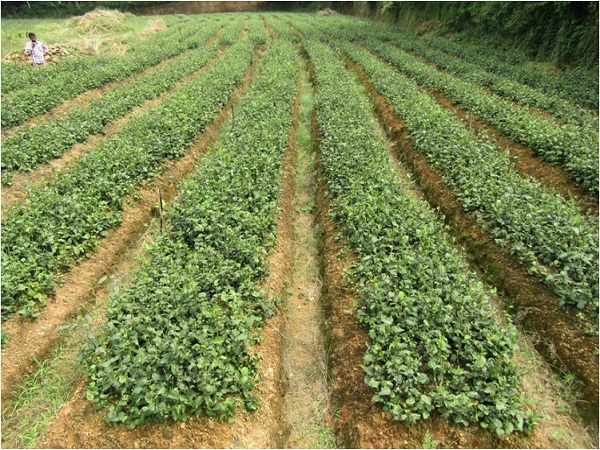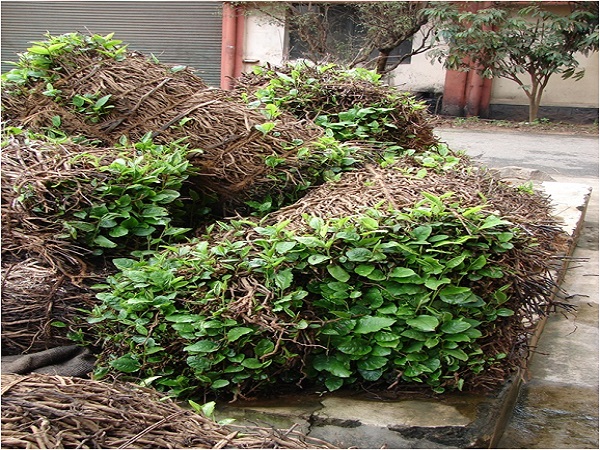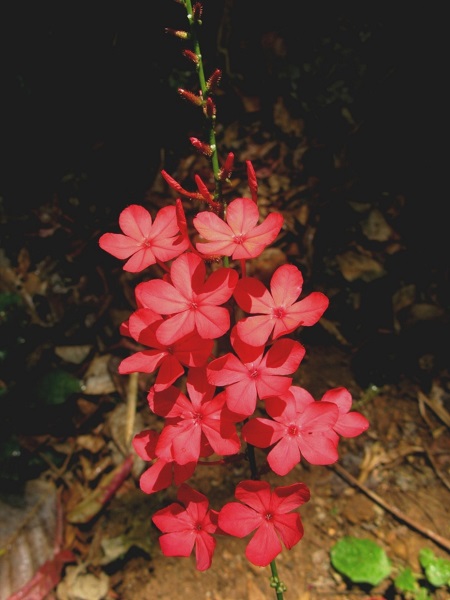
| Family | Plumbaginaceae |
| English Name | Scarlet leadwort |
| Malayalam Name | Chethikoduveli |
| Tamil Name | Akkini |
| Kannada Name | Chitramulika |
| Telugu Name | Erra chitramoolam |
| Hindi Name | Lal chitrak |
| Sanskrit Name | Agnih, Dahanah, Raktacitraka |
| Trade Name | Chitrakamool |
| Part Used | Roots and stem |
| In Wild | No |
| Under Cultivation | Yes |
| Temperature | 25 - 35°C |
| Rainfall | NA |
| Farmers | NA |
| Traders | NA |
| Institution | NA |
| Individually | NA |
| State/Region | NA |
| District | NA |
| Nursery Information | NA |
| Yield | Yield may vary from 1.2 tonnes to 1.8 tonnes of dried herb per hectare. |
| Economic of cultivation | NA |
| Quantitative quality standards | a. Foreign matter (other plant parts, soil, stone, sand, dust, organisms and their parts) : Not more than 2.0 percent (w/w). b. Ash : Not more than 2.5 percent (w/w). c. Acid-insoluble ash : Not more than 0.6 percent (w/v). d. Ethanol-soluble extractives : Not less than 4.0 percent (w/v). e. Water-soluble extractive : Not less than 3.3 percent (w/v). |
| Description | NA |
| Agro technology/Cultivation practices | Agro-ecological requirements The plant can be grown in variety of soils with high organic content and partially shady locations. Open and sunny conditions are not favorable for its growth. Seed propagation : The seeds are not viable which are produced by Plumbago indica. Vegetative propagation : The stem cuttings of Chitrak should be obtained from base till the third node at the apex. Plant propagation can be done throughout the year in a mist chamber, and 80%–100% success rate is obtained from basal cuttings extending up to seventh to ninth nodes. Field planting : About 80 000 rooted stem cuttings or seed- lings are required for planting in 1 hectare of land. The optimum spacing recommended in the field is 50 cm × 25 cm, which produces maximum root biomass. The crop is maintained without weed-competition. Manuring/Fertilization : Manure/fertilizer application is done ideally after soil/plant analysis. FYM (farmyard manure) at the rate of 10 tonnes/hectare is applied 30 days before planting at the time of ploughing and land preparation. Irrigation : Irrigation is not required in rainy season except during long gap. Later, irrigating the crop four to five times in November, January, March, April, and May is sufficient. Flat or flood irrigation method is required. Pest and diseases : Not reported. |
| Harversting | Plant attains maturity in 10–12 months after transplanting. Best time for harvesting is 12 months after sowing. About 20000 mother plants are require for getting 80000 stem cuttings to make vegetative propagules for future plantation in 1 hectare of land in successive years. The roots should be dug out during a clear, sunny day in June, so that they can be shade-dried. The field may be irrigated before harvesting for easy digging. The field should be deep ploughed with mould board plough to expose the roots, which should be collected immediately. |
| Processing | After harvesting, the roots must be washed in clean water, dried, and cut into pieces of length 5–7.5 cm. The roots must be dried before storage till they have 10%–13% moisture left. Cleaned and dried roots must be packed in airtight polybags for storage. |
| References | NA |


